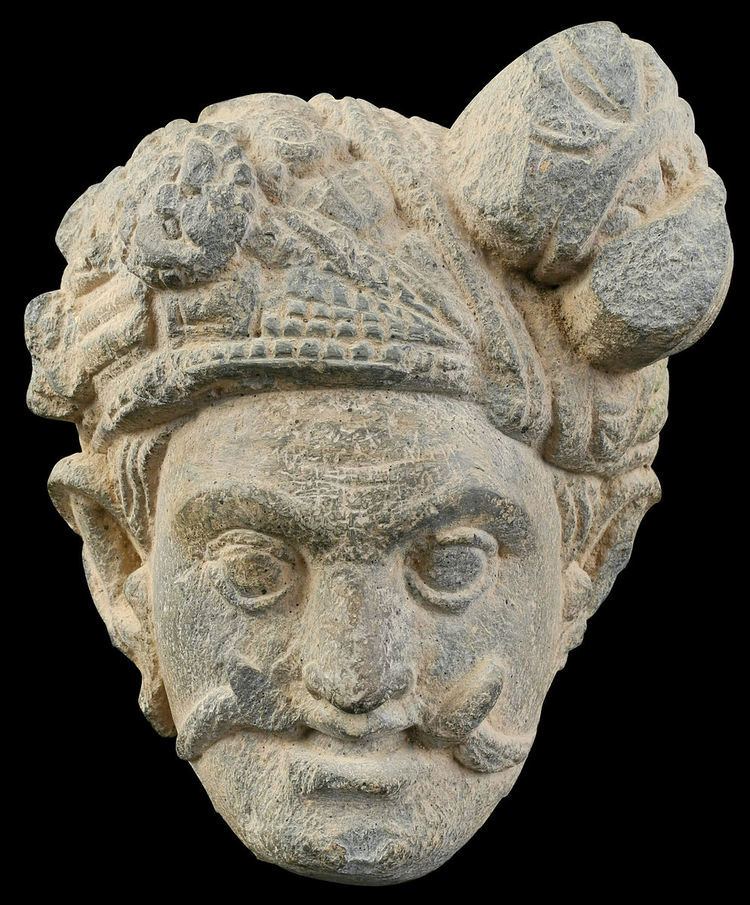 | ||
Mara (Sanskrit: मार, Māra; Chinese: 天魔; pinyin: Tiānmó; Tibetan Wylie: bdud; Khmer: មារ; Burmese: မာရ်နတ်; Thai: มาร; Sinhalese: මාරයා), in Buddhism, is the demon that tempted Gautama Buddha by trying to seduce him with the vision of beautiful women who, in various legends, are often said to be Mara's daughters. In Buddhist cosmology, Mara is associated with death, rebirth and desire. Nyanaponika Thera has described Mara as "the personification of the forces antagonistic to enlightenment."
Contents
Etymology
The word "Māra" comes from the Proto-Indo-European root *mer meaning to die. The Sanskrit form of the verbal root is √mṛ. It takes a present indicative form mṛyate and a causative form mārayati (with strengthening of the root vowel from ṛ to ār). Māra is a verbal noun from the causative root and means 'causing death' or 'killing'. It is related to other words for death from the same root, such as: maraṇa and mṛtyu. The latter is a name for death personified and is sometimes identified with Yama.
Overview
In traditional Buddhism four metaphorical forms of "māra" are given:
Overseer
Early Buddhism acknowledged both a literal and psychological interpretation of Mara. Specially Mara is described both as an entity having an existence in Kāma-world, just as are shown existing around the Buddha, and also is described in paṭiccasamuppāda as, primarily, the guardian of passion and the catalyst for lust, hesitation and fear that obstructs meditation among Buddhists.
"Buddha defying Mara" is a common pose of Buddha sculptures. The Buddha is shown with his left hand in his lap, palm facing upwards and his right hand on his right knee. The fingers of his right hand touch the earth, to call the earth as his witness for defying Mara and achieving enlightenment. This posture is also referred to as the 'earth-touching' mudra.
Three daughters
In some accounts of the Buddha's enlightenment, it is said that the demon Māra didn't send his three daughters to tempt but instead they came willingly after Māra's setback in his endeavor to eliminate the Buddha's quest for enlightenment. Mara's three daughters are identified as Taṇhā (Craving), Arati (Aversion/Discontentment), and Raga (Attachment/Desire/Greed/Passion). For example, in the Samyutta Nikaya's Māra-saṃyutta, Mara's three daughters were stripping in front of Buddha; but failed to entice the Buddha:
They had come to him glittering with beauty —Taṇhā, Arati, and Rāga —But the Teacher swept them away right thereAs the wind, a fallen cotton tuft.Some stories refer to the existence of Five Daughters, who represent not only the Three Poisons of Attraction, Aversion, and Delusion, but also include the daughters Pride, and Fear.
